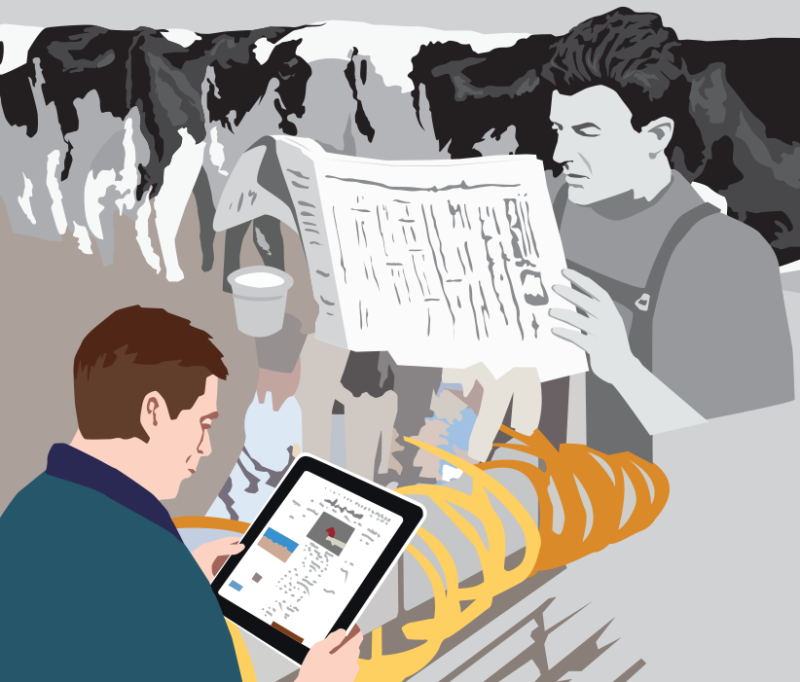Recently, I received an email from Emma, a farmer’s daughter who graduated several years behind me in school. She has decided to take on the ambitious task of applying for the USDA Food Supply Infrastructure grant. The purpose of the project is to make a more resilient food supply in the area, largely by allowing farmers to sell their products locally. The grant will help create the necessary arrangements and relationships to collect foodstuffs from local farmers, process the food in the area and distribute it directly to local retailers and consumers.
The place where Emma and I came from has changed drastically in the years since we were in high school. Allegany County, one of the most rural places in New York state, was sustained by family farms producing for the traditional export market. Now many of those farms are gone. Individuals have taken on projects to help keep farm products in the area, including community gardens, food processing equipment in a county jail and mobile meat processing trailers. While all these projects were valuable, they didn’t have the infrastructure to sustain themselves in the long run, and when the funding for the projects ran out, sometimes they were no longer viable.
What Emma and her partners are pursuing to create in our area is called Agriculture of the Middle. As the average farm size increases around the world, many small or mid-size farms can’t compete in traditional markets without the advantage of economies of scale. On the other hand, they are too large to make a living by selling directly to consumers or don’t have access to an urban center to sustain them. The concept of Agriculture of the Middle is to create long-term relationships between farmers and local processors, retailers and distributors to help farmers receive a fairer price for what they produce, as well as to make sure that food is consumed in the area it is made.
In places where Agriculture of the Middle is, or will be, successful may be because of its ace in the hole: People generally want small farms to succeed. They would rather the face of food production be red barns, green fields and cows on pasture. Likely, many farmers would prefer to be able to make a living with smaller enterprises as well. Creating regional infrastructures allows consumers to directly support the farmers in their area, and many are willing to pay a higher price for what they purchase in order to do so. This “value-based food chain” allows people to feel good about what they eat because they know it is supporting their rural economies.
I believe Emma’s vision looks something like this: An agreement is reached with participating farmers for the price and amount of their products, after which the foodstuffs are processed somewhere in a nearby designated facility. This may include washing and canning vegetables, pasteurizing fluid milk, as well as any necessary packaging and refrigeration. From there, the food is sold directly to consumers, establishments like schools or churches, produce auctions or to local retailers. The infrastructure will depend upon building relationships within the community at the various levels of the food chain. Although an ambitious model, it is one that has already worked in some rural communities. In The Town that Food Saved, Ben Hewitt tells the success story of Hardwick, Vermont, where a farming village of 3,000 residents revitalized their economy in a similar effort.
When I was younger, I’ll admit there was a time I would have – and probably did – roll my eyes at a bumper sticker that said “Keep Food Local.” I would have thought the notion that of hippies, or worse, urban. I would have considered it not the concern of actual farming that was needed to feed the world. However, a lot has changed in agriculture in the last two decades. Many of our family members or neighbors who I considered actual farmers are no longer farming because they couldn’t survive. If there’s a way to keep some of these type of farmers on the land, I’m now for it.
Emma’s team has a challenging task in front of them. They’re going to need individuals to volunteer their time and organizations willing to partner and collaborate with their project. They’re going to have to sell their vision to a community that hasn’t seen it before and convince them of the value to be gained from it. To build the necessary infrastructure, as well as the support for it, will take time. However, the work they’re doing may just well be a godsend to a rural county that wants to keep its farmers.
If you have access to locally produced food in your area, consider purchasing it. In addition to supporting your area economy, it is helping build energy behind a system of production that has the interest of the farmer at its core. In the end, that matters, not just for those who produce food but for the rural communities that depend on them.






